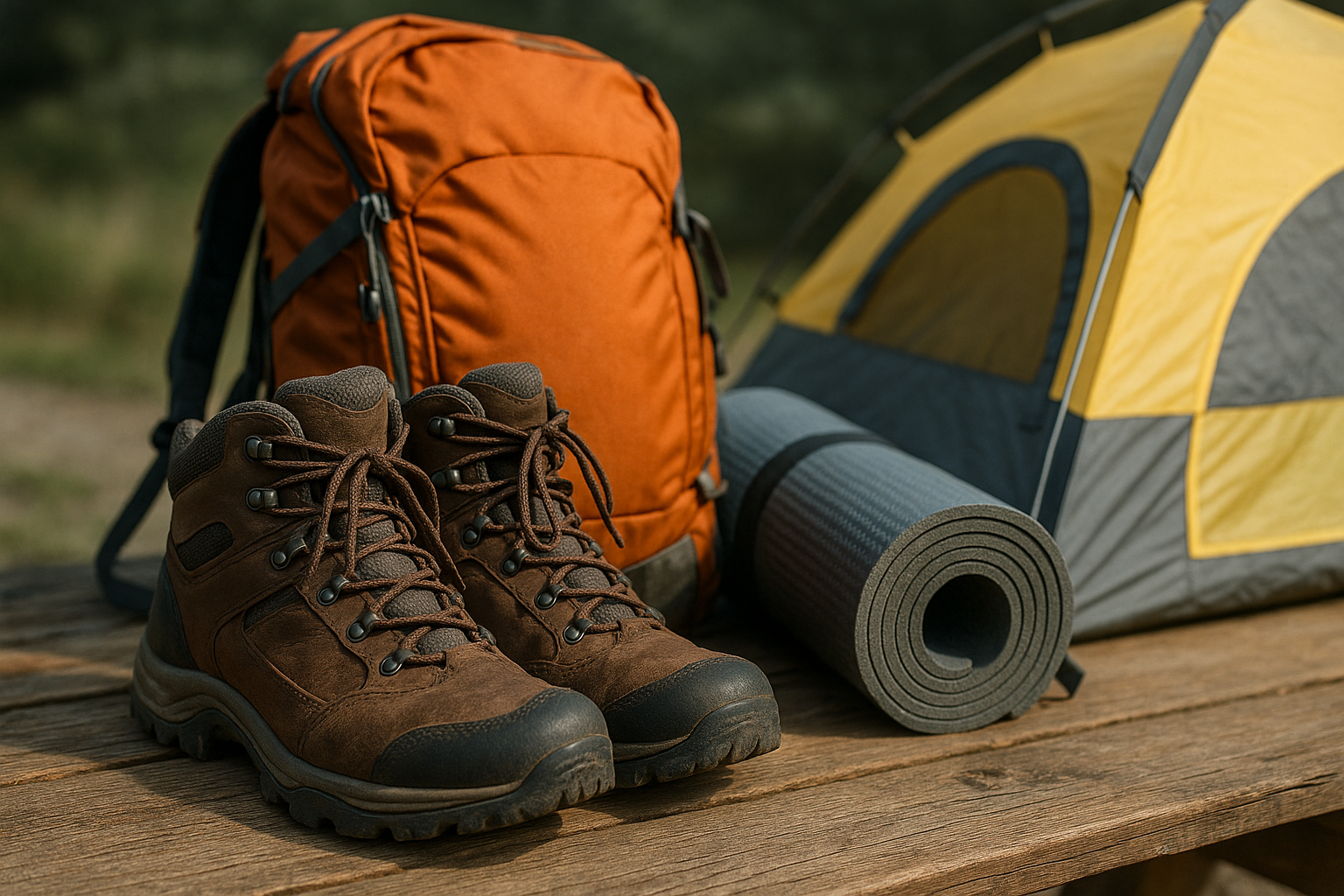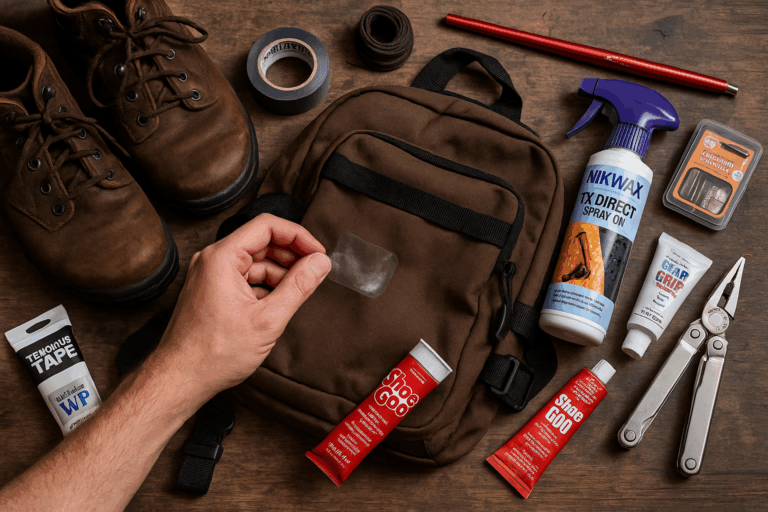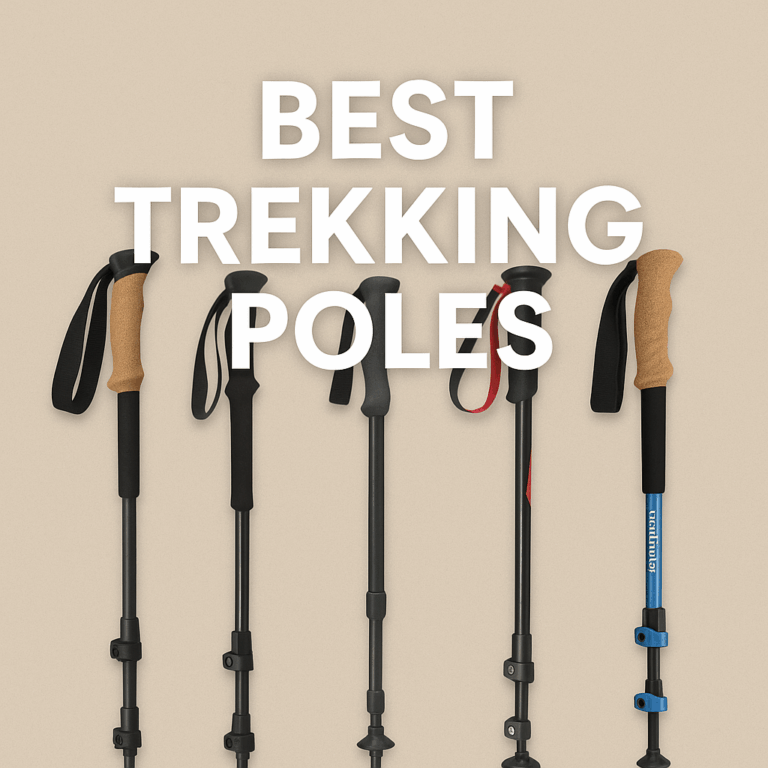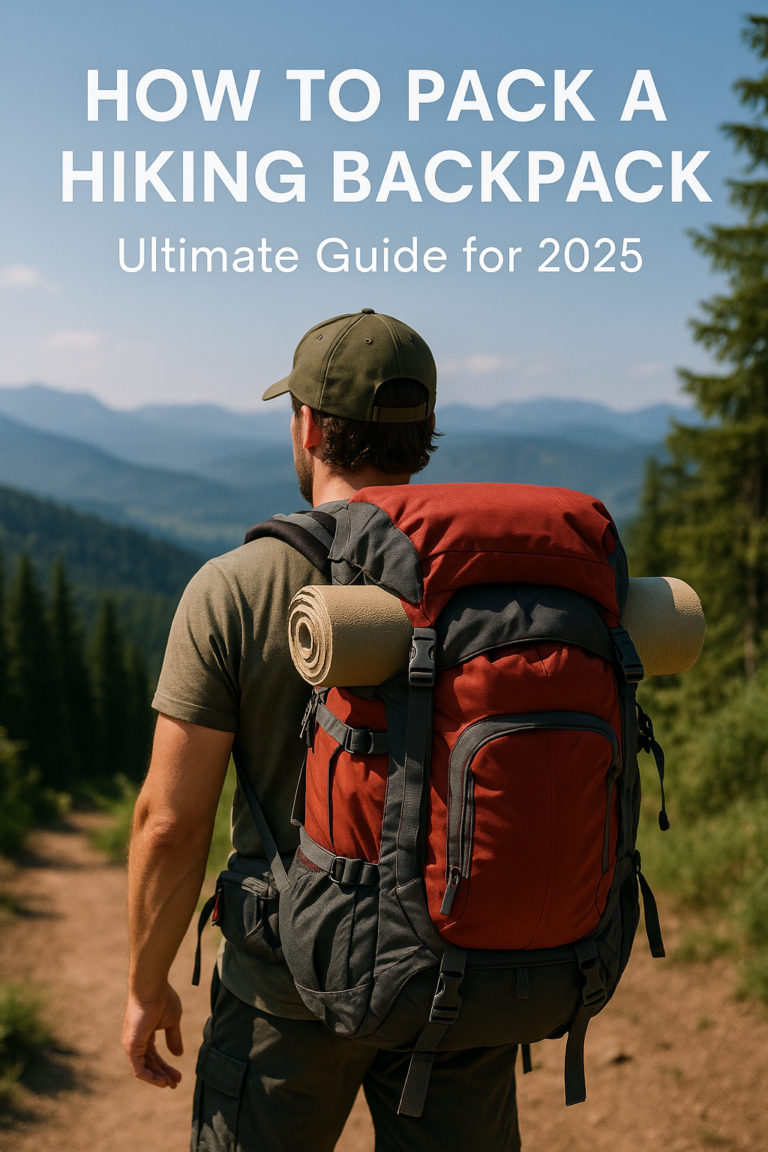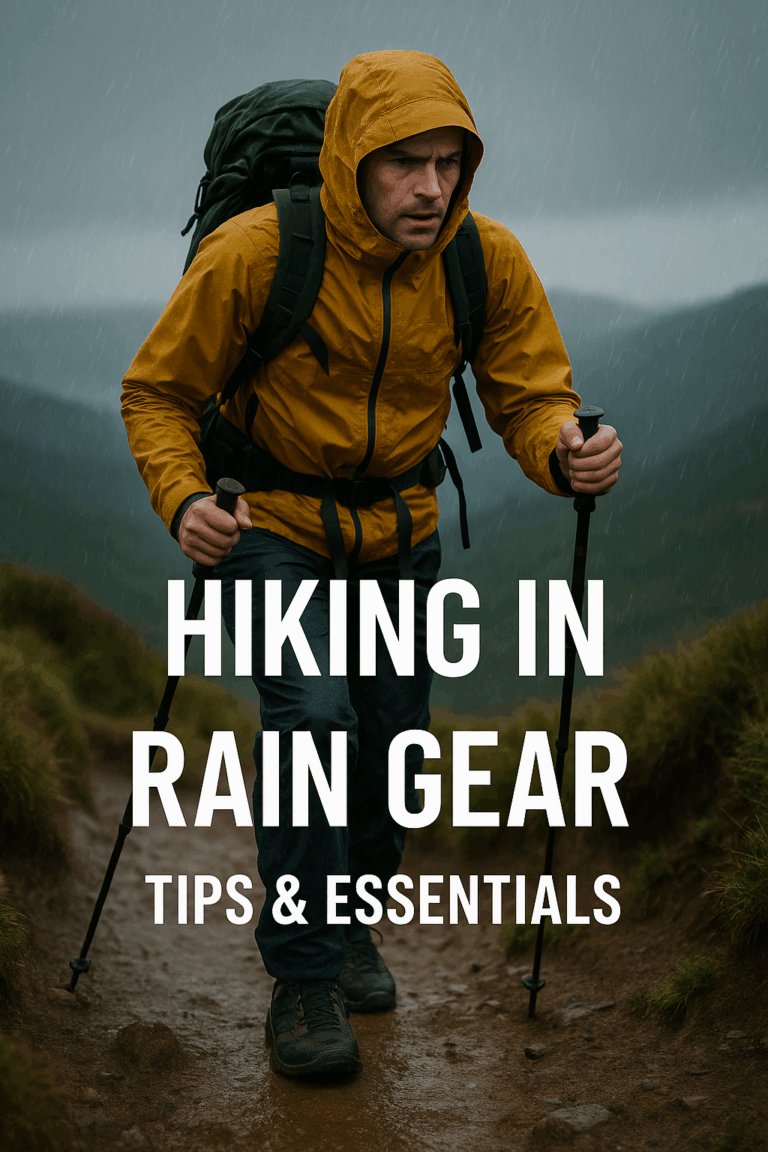Hiking Gear Maintenance: Extending the Life of Your Equipment
Introduction
Did you know that proper gear maintenance can extend the life of your hiking equipment by up to 300%? I’ve learned this the hard way after watching expensive boots fall apart mid-hike and sleeping bags lose their warmth when I needed it most.
Your hiking gear is an investment in countless adventures ahead. But without proper care, even the highest-quality equipment will fail you when you need it most!
Whether you’re a weekend warrior or a seasoned backpacker, maintaining your hiking gear isn’t just about saving money. It’s about safety, performance, and ensuring your equipment performs flawlessly mile after mile.
In this comprehensive guide, I’ll walk you through everything you need to know about keeping your outdoor gear in peak condition. From basic cleaning techniques to advanced repair strategies, you’ll learn how to keep your gear performing like new for years to come.
Essential Hiking Boot Care and Maintenance
Man, I learned the hard way that dropping $300 on a pair of hiking boots doesn’t mean jack if you don’t take care of them properly. My first “investment” pair lasted about eight months before they were basically trash – cracked leather, worn-out soles, and that funky smell that never goes away no matter what you do. That experience taught me that hiking gear maintenance isn’t just about keeping things looking nice – it’s about keeping you safe on the trail.
Let me save you from making the same rookie mistakes I did with hiking equipment care.
Cleaning Different Boot Materials the Right Way
The cleaning game changes everything, and I mean everything. For leather boots, I used to just hose them down after muddy hikes. Big mistake. Now I remove the laces first (trust me on this), then use a soft brush to get the loose dirt off before it sets in. This hiking boot cleaning technique has extended the life of my boots by years. For synthetic materials, you can be a bit more aggressive with the scrubbing, but leather needs that gentle touch. I learned this after basically destroying the finish on my first pair of Asolos.
Waterproof boots are trickier than you’d think. The waterproof membrane can actually get damaged by harsh soaps, so stick with specialized boot cleaners for proper outdoor gear maintenance. I use Nikwax products now after trying everything from dish soap to laundry detergent – yeah, don’t do that.
Conditioning and Waterproofing Schedules That Actually Work
Here’s where most people mess up their hiking gear maintenance: conditioning schedules. Leather boots need conditioning every 3-4 months if you’re hiking regularly, but here’s the kicker – over-conditioning is just as bad as under-conditioning. I used to slather on leather conditioner like it was going out of style, which made the leather too soft and actually reduced support.
For hiking boot waterproofing, I reapply treatment every 6-8 weeks during hiking season. The test I use? Pour a little water on the boot – if it beads up and rolls off, you’re good. If it soaks in, time to waterproof again. This simple outdoor gear waterproofing check has prevented countless wet feet situations.
When to Inspect and Resole Your Hiking Boots
Sole inspection became my obsession after I nearly ate dirt on a steep descent because my treads were completely shot. Check your soles every month during active hiking season as part of your hiking equipment inspection routine. When the tread depth gets below 3mm, or you can see the midsole through the rubber, it’s resole time. Most quality boots can be resoled 2-3 times, which extends their life by years – a key part of smart hiking gear maintenance.
Look for uneven wear patterns too – they’ll tell you if your gait is off or if you need different insoles. I discovered I was overpronating just by paying attention to how my soles were wearing down during my regular trail equipment inspection.
Proper Storage to Prevent Boot Deterioration
Storage was another thing I completely botched initially. Stuffing sweaty boots in a dark closet creates a breeding ground for bacteria and mold. Now I always dry them thoroughly first – stuff newspaper inside to absorb moisture and maintain shape. Never put them near direct heat though; learned that lesson when I warped a pair by the fireplace.
Keep boots in a cool, dry place with good airflow. Cedar shoe trees are worth the investment for leather boots – they prevent cracking and maintain the boot’s shape between hikes. This hiking equipment storage method has saved me from replacing boots prematurely.
Lacing System Care and Replacement
Lacing systems need love too as part of comprehensive hiking gear maintenance. I replace my laces every season because frayed laces always seem to break at the worst possible moments. Check the eyelets and hooks monthly for sharp edges that could cut new laces. File down any rough spots you find.
Pro tip: keep a spare set of laces in your hiking pack. Nothing ruins a day on the trail like a busted lace 5 miles from the trailhead.
The bottom line? Proper hiking gear maintenance isn’t glamorous, but it’ll save you hundreds of dollars and prevent those miserable hikes with gear that’s falling apart on your feet.
🥾 For a deeper dive into cleaning and waterproofing hiking boots, check out REI’s expert guide on end-of-season gear care and Sea to Summit’s detailed tips on cleaning and storing outdoor gear. You can also find additional maintenance insights at Garage Grown Gear’s repair and maintenance guide.
Backpack Maintenance: Keeping Your Pack Trail-Ready
Nothing humbles you quite like having your pack fall apart 20 miles into a multi-day trek. I’ve been there – watching helplessly as my hip belt buckle completely snapped on day three of what was supposed to be an epic five-day adventure. That experience taught me more about backpacking gear repair than any gear review ever could.
Your backpack is basically your lifeline on the trail, and treating it like disposable gear is a mistake I won’t make again. Proper outdoor gear maintenance starts with understanding that your pack takes the most abuse of any piece of equipment.
Frame Inspection and Weight Distribution Adjustments
Frame inspection should be part of your pre-trip ritual, not something you think about after problems start. I check my internal frame stays every few months as part of my hiking equipment inspection routine, looking for any bends or stress points. These aluminum stays can crack without you even noticing, especially if you’ve taken a tumble or overpacked your bag.
The torso length adjustment is where most people get lazy with their backpacking equipment care. I used to just set it once and forget about it, but your body changes over hiking seasons. I gained about 15 pounds one winter and my pack fit completely different come spring. Now I readjust the frame height every season and after any significant weight changes.
Check the load lifter straps too – they should angle down from your shoulders at about 45 degrees when properly adjusted. If they’re pulling straight back, your frame’s too long. If they’re angling up, it’s too short. This is basic trail equipment preparation that saves your shoulders and back.
Zipper Care That Actually Prevents Failures
Zipper maintenance saved my butt more times than I can count. I learned this lesson when my main compartment zipper seized up completely on a rainy day in the Smokies. Everything I owned was soaked because I couldn’t access my rain gear – a failure in my hiking gear maintenance routine that could’ve been prevented.
The trick is regular lubrication with specialized zipper lubricant – not WD-40 or soap like some people suggest. I use Gear Aid Zipper Cleaner and Lubricant every month during active season as part of my backpack maintenance tips routine. Work the zipper slowly after applying, and always clean off any dirt or debris first.
For stubborn zippers, I’ve found that graphite from a pencil works in a pinch. Just rub the pencil lead along the teeth, but this is more of an emergency fix than a maintenance solution for proper outdoor equipment cleaning.
Cleaning Different Pack Materials Without Damage
Fabric cleaning varies wildly depending on your pack material, and I’ve ruined expensive packs by using the wrong approach. Nylon and polyester can handle more aggressive cleaning, but ripstop fabrics need gentler treatment to avoid damaging the weave. Understanding different backpack cleaning methods is crucial for hiking gear maintenance.
For general cleaning, I hand wash with mild soap in a bathtub. Machine washing works for some packs, but check the manufacturer’s recommendations first. I learned this the hard way when I threw my first serious pack in the washer and the foam padding clumped up permanently.
Never use fabric softener – it can break down waterproof coatings and reduce the fabric’s durability. Air dry only, and keep it away from direct sunlight during drying to prevent UV damage to the fabric. This outdoor equipment cleaning approach preserves the gear for years.
Strap and Buckle System Maintenance
Strap and buckle maintenance is criminally overlooked by most hikers. Those plastic buckles take a beating, especially the quick-release ones on hip belts and sternum straps. I inspect all buckles before major trips as part of my hiking equipment inspection, looking for stress cracks or worn contact points.
The webbing straps stretch over time, which affects how your pack sits. If your hip belt or shoulder straps have gotten loose even on the tightest setting, it might be time to replace them. Most manufacturers sell replacement parts, and it’s way cheaper than a new pack – smart backpacking equipment care saves money.
Waterproofing and DWR Coating Renewal
DWR coating renewal became essential after I watched water soak through my “waterproof” pack during a three-day rain fest in Washington. That durable water repellent coating wears off with use and washing, and most people don’t realize it needs refreshing as part of regular waterproof gear maintenance.
I reapply DWR treatment twice a year using products like Nikwax TX.Direct as part of my outdoor gear waterproofing routine. The key is applying it to clean, damp fabric and then heat-activating it with a hair dryer on low heat. You’ll know it’s working when water beads up and rolls off instead of soaking in.
For packs without built-in rain covers, consider adding waterproof stuff sacks for critical gear. It’s way more reliable than depending solely on the pack’s water resistance.
Bottom line: a well-maintained pack will outlast three neglected ones. These hiking gear maintenance habits have extended the life of my current pack by years, and more importantly, they’ve prevented those trail disasters that can ruin entire trips.
🎒 When it comes to taking care of your backpack, both REI and Clutter offer great insights on how to clean, store, and extend the life of your pack.
Tent and Shelter System Care
I’ll never forget the sound of my tent floor literally peeling apart during a storm in the Cascades. That sickening ripping noise at 2 AM while rain poured down taught me everything I needed to know about what happens when you ignore camping equipment care. Spoiler alert: it gets expensive and miserable real quick.
Your shelter is the one piece of gear that absolutely cannot fail when you need it most, which is why I’m borderline obsessive about hiking gear maintenance for my tent system now.
Cleaning Your Tent Without Destroying Waterproof Coatings
Cleaning a tent properly is way more complicated than most people realize, and I’ve watched friends destroy hundred-dollar shelters with the wrong approach. The biggest mistake? Using regular detergent or soap, which strips away the polyurethane coating that keeps you dry. This is where proper tent care instructions become critical.
I learned this lesson after washing my first serious tent with Dawn dish soap. Seemed logical at the time – gets grease out, right? Wrong. The coating started peeling off in sheets within a month, and suddenly my “waterproof” tent was about as effective as a screen door.
Now I only use specialized tent cleaners like Gear Aid Revivex or Nikwax Tech Wash for my camping gear maintenance routine. Set up the tent completely, then spot clean with a soft brush and lukewarm water. For stubborn stains, I let the cleaner sit for about 10 minutes before gentle scrubbing. Never use a pressure washer or aggressive scrubbing – the coating is thinner than you think.
The drying process is crucial too for proper outdoor equipment cleaning. Air dry only, away from direct sunlight. UV rays break down tent fabrics faster than almost anything else, which is why I always dry mine in the shade or garage.
Seam Sealing Maintenance and Reapplication
Seam sealing is one of those tent maintenance guide tasks that seems optional until water starts dripping on your sleeping bag. Factory seam sealing degrades over time, especially with regular use and temperature changes. I check my tent seams twice a year now as part of my hiking gear maintenance schedule, looking for any areas where the sealant has cracked or peeled away.
The reapplication process isn’t rocket science, but timing matters. Clean the seams thoroughly first, then apply seam sealer when it’s humid but not raining – the moisture actually helps the sealant cure properly. I use Seam Grip SIL for silicone-treated fabrics and regular Seam Grip for polyurethane-coated tents.
Pro tip that saved me multiple times: Test your seam sealing with a hose before your next trip. Set up the tent in your backyard and spray it down. Way better to find leaks at home than at 11,000 feet in a thunderstorm. This camping equipment inspection step is non-negotiable.
Pole Inspection and Repair Techniques
Tent pole failures are trail trip-killers, and they always seem to happen at the worst possible moments. I’ve had aluminum poles snap during setup, shock cord fail mid-trip, and ferrules crack from temperature stress. Each failure taught me something new about prevention through proper hiking equipment inspection.
For aluminum poles, I inspect each section for dents, cracks, or stress points before every major trip. Small dents aren’t usually a problem, but deep ones create weak spots that’ll eventually fail. The shock cord inside needs replacement every 2-3 years depending on use – it stretches out and loses tension over time.
Carbon fiber poles are trickier as part of mountaineering gear maintenance. They’re stronger than aluminum in some ways but can shatter suddenly without warning. I run my hands along each section feeling for any rough spots or splinters that might indicate damage. Never try to force a stuck carbon fiber pole – they’ll snap before they bend.
Keep a pole repair sleeve in your kit. These aluminum sleeves slide over breaks and can save a trip when disaster strikes.
Fabric Tear Repair Using Patches and Adhesives
Fabric repairs became my specialty after I put my knee through my tent floor during a rushed setup on rocky ground. That thumbnail-sized hole would’ve ruined the whole trip if I hadn’t known how to fix it properly through outdoor equipment repair techniques.
For small tears, I use Tenacious Tape patches – they’re basically tent band-aids that actually work. Clean the area first, round the corners of the patch to prevent peeling, and apply firm pressure for about 30 seconds. For the tent floor, I always patch both sides since that’s where the real stress happens.
Larger tears need more serious repair. I keep Seam Grip adhesive for emergency repairs, but honestly, big rips usually mean it’s time to consider professional camping equipment repair or replacement. Don’t try to save a tent that’s more patch than original fabric.
Storage Methods to Prevent Mold and Mildew
Storage mistakes probably kill more tents than actual use does. I used to just stuff my tent away wet after trips, figuring I’d deal with it later. That “later” never came, and I’ve lost two tents to mold damage from improper outdoor equipment storage.
Now my routine is non-negotiable: tent gets set up and completely dried before storage, every single time. Even if it means setting it up in my living room for a day. Mold and mildew damage isn’t just cosmetic – it weakens the fabric and can make your tent smell like a swamp permanently.
Store tents loosely in a breathable stuff sack or hang them in a closet. Never leave them compressed in their storage sack long-term – the constant pressure can damage waterproof coatings and create permanent creases. This hiking equipment storage method preserves the tent’s integrity.
A well-maintained tent will last for decades and hundreds of nights under the stars. Neglect your hiking gear maintenance, and you’ll be shopping for replacements way more often than your wallet wants to handle.
⛺ For tent cleaning and seam sealing best practices, check out REI’s article on cleaning and storing camping gear and Garage Grown Gear’s tips on gear patching and repairs.
Sleeping System Maintenance (Bags and Pads)
My first quality sleeping bag cost me $400, and I managed to completely ruin it within two years because I treated it like a regular blanket. The down clumped into useless lumps, the shell fabric lost its water resistance, and worst of all, it stopped keeping me warm when I needed it most. That freezing night in Colorado at 10,000 feet taught me that hiking gear maintenance for sleeping systems isn’t optional – it’s survival.
Now I baby my sleep system like it’s made of gold, because frankly, good gear is almost that expensive these days.
Down vs Synthetic Insulation Care Requirements
The care requirements between down and synthetic fill are like night and day, and mixing up the two approaches will destroy your gear fast. Down is basically a diva – it needs special treatment but rewards you with incredible warmth-to-weight ratios when treated right. Synthetic fill is more forgiving but has its own quirks in camping equipment care.
Down sleeping bags should rarely be washed – maybe once every 50+ nights of use, or when they start smelling funky. The natural oils in down actually help with loft and water resistance, so overwashing strips away these protective properties. I learned this after washing my first down bag three times in one season and wondering why it stopped being warm.
Synthetic bags can handle more frequent washing, usually every 20-30 uses depending on conditions. The synthetic fibers don’t rely on natural oils like down does, but they’re more prone to compression damage over time. Understanding these differences is crucial for proper sleeping bag care.
Storage is where the biggest difference shows up. Down needs to breathe and stay loose, while synthetic fill is more tolerant of compression but still shouldn’t be stuffed tight for months at a time as part of hiking equipment storage protocols.
Proper Washing and Drying Techniques
Washing a sleeping bag properly is an art form that took me several expensive mistakes to master. The process varies dramatically between down and synthetic, and getting it wrong means buying new gear. This sleeping bag cleaning technique is essential hiking gear maintenance knowledge.
For down bags, I only use front-loading washers – the agitator in top-loaders will destroy the baffles and create cold spots. Use specialized down cleaners like Nikwax Down Wash, never regular detergent. The wash cycle should be gentle with an extra rinse to remove all soap residue.
Drying down is where most people mess up their hiking gear maintenance big time. It takes forever – we’re talking 4-6 hours in a commercial dryer on low heat. I throw in a couple clean tennis balls to help break up clumps and restore loft. Check every 30 minutes and manually break apart any clumps you find.
Synthetic bags are more straightforward but still need care. Machine wash on warm with mild detergent, but skip the fabric softener – it breaks down the synthetic fibers. Dry on medium heat, and they usually dry faster than down.
Sleeping Pad Valve Maintenance and Leak Detection
Valve maintenance became critical after my pad deflated completely during a below-freezing night in the Rockies. Turns out, a tiny bit of debris had prevented the valve from sealing properly. Now I clean my valve threads monthly with a small brush and check the O-rings for damage as part of my outdoor equipment upkeep routine.
For leak detection, the soapy water method works best. Inflate the pad fully, then spray soapy water over every inch. Bubbles will form at leak sites. I’ve found leaks in the weirdest places – valve stems, seam tape edges, even tiny pinhole punctures from thorns.
The flat tire test works too for camping gear inspection. Submerge sections of the inflated pad in water and look for air bubbles. Mark any leaks immediately with a Sharpie before deflating.
Valve maintenance includes checking the pump sack connection points. Those threads wear out over time, especially if you cross-thread them during tired late-night setups.
Compression Sack Care and Loft Preservation
Compression sacks are both blessing and curse for sleeping bags. They save pack space but can damage your insulation if used wrong. I used to leave my down bag compressed for weeks between trips, which permanently crushed some of the down clusters – a major hiking gear maintenance mistake.
Now I only compress my bag right before hitting the trail and decompress it immediately when I get home. The rule I follow: never leave a sleeping bag compressed for more than a week unless absolutely necessary.
The compression technique matters too for trekking gear preservation. I stuff my bag into the sack randomly rather than folding it. Folding creates permanent creases that become cold spots over time. Random stuffing distributes the compression stress more evenly across the insulation.
Check your compression sack’s buckles and straps regularly. I’ve had buckles fail mid-trip, leaving me with a loose, bulky bag that took up half my pack space.
Long-term Storage for Insulation Preservation
Storage is where sleeping bags go to die if you do it wrong. Both down and synthetic bags need to be stored loose to maintain their insulation properties. I hang my down bag in a closet or store it in a large cotton storage sack that came with the bag – proper hiking equipment storage is crucial.
Never store sleeping bags in their compression sacks long-term. The constant pressure breaks down both down clusters and synthetic fibers, reducing their ability to trap warm air. I made this mistake with my first synthetic bag and lost about 20% of its warmth rating.
Temperature and humidity matter for camping gear storage too. Basements and attics with temperature swings can damage fabric coatings and promote mold growth. I keep my bags in a climate-controlled bedroom closet where they stay dry and at consistent temperature.
Air them out occasionally during long storage periods. Once a month, I’ll take my bags out, fluff them up, and let them air out for a day before putting them back.
A properly maintained sleeping system will keep you warm for hundreds of nights and many years. Neglect your hiking gear maintenance, and you’ll be cold, uncomfortable, and shopping for expensive replacements way too often.
🛏️ Proper sleeping bag maintenance is essential. Cascade Designs has a great pre-season checklist, and REI explains how to clean and store your bag without damaging the insulation.
Technical Gear Maintenance and Safety Checks
The moment that really drove home the importance of gear inspection was standing at the base of a 400-foot cliff, looking up at my climbing partner, when I noticed my rope had a core shot I’d somehow missed during my “quick” gear check. That little white strand poking through the sheath could’ve been a death sentence if we’d started the climb. Ever since that day, I treat technical gear inspection like the life-or-death process it actually is.
When your gear fails in the backcountry, the consequences aren’t just inconvenience – they’re potentially fatal. This is where mountaineering gear maintenance becomes absolutely critical.
Rope Inspection Protocols That Could Save Your Life
Rope inspection is where I get absolutely obsessive, and for good reason. Dynamic climbing ropes are engineered to save your life, but they’re also surprisingly fragile when damaged. I inspect every inch of my ropes before each climbing season and after any significant fall or rough use as part of my hiking equipment inspection routine.
The process starts with running the entire rope through my hands, feeling for flat spots, inconsistent diameter, or any areas where the sheath feels loose over the core. Core shots are the most dangerous – those white core fibers showing through the sheath mean immediate retirement, no exceptions.
I mark questionable spots with tape and measure them. Any flat spot longer than two inches gets the rope retired, even if it seems minor. Same goes for areas where the sheath has bunched up or slipped over the core. These weak points concentrate force and can fail catastrophically under load.
Keep a rope log with dates, number of falls taken, and any damage noted. Most manufacturers recommend retiring ropes after 5-10 years regardless of use, but heavy use can shorten that dramatically. I’ve retired ropes after just two seasons when they’ve seen serious alpine abuse.
Carabiner and Hardware Safety Protocols
Carabiner maintenance seems straightforward until you’re hanging from one that decides to malfunction. I’ve had gates freeze shut, springs break, and worst of all, a gate that wouldn’t close properly because of grit in the mechanism. This mountaineering gear service is non-negotiable for safety.
My monthly carabiner routine involves function-testing every piece. Open and close each gate 10-15 times, feeling for smooth operation. Any sticking, grinding, or resistance means cleaning time. I use a toothbrush and warm soapy water to clean the pivot points, followed by a tiny drop of sewing machine oil on the spring mechanism.
Look for stress cracks around the gate hinge and where the spine meets the gate. These hairline cracks can propagate quickly under load. I use a magnifying glass for this inspection – sounds paranoid, but aluminum fatigue cracks start microscopic.
Check the gate closure too. It should snap shut firmly with no play when loaded. A gate that doesn’t close completely reduces the carabiner’s strength by up to 70%, turning your 25kN rated piece into dangerous junk.
Any carabiner that’s taken a serious fall or impact gets extra scrutiny. I’ve retired perfectly good-looking carabiners after they’ve been dropped from height onto rock, even when I can’t see obvious damage.
Headlamp and Electronic Device Weatherproofing
Electronics failure in the wilderness ranges from annoying to life-threatening, depending on conditions. I learned about proper weatherproofing during a week-long storm in Alaska where my “waterproof” headlamp died on night three, leaving me fumbling around camp in complete darkness.
Headlamp maintenance starts with the battery contacts. Corrosion here kills more headlamps than anything else. I clean contacts monthly with a small wire brush and apply dielectric grease to prevent moisture problems as part of my hiking equipment servicing routine. Always remove batteries for long-term storage – even “non-leaking” batteries can destroy electronics over time.
The O-ring seals need regular attention too. I inspect them every few months for cracks, hardening, or deformation. A thin layer of silicone grease keeps them pliable and maintains the waterproof seal. Replace O-rings annually if you use your headlamp regularly in wet conditions.
For GPS units and other critical electronics, I use extra protection even when they’re rated waterproof. Dry bags, waterproof cases, or even just a Ziploc bag can save your navigation when the “waterproof” rating fails in driving rain or snow.
Water Filtration System Maintenance and Replacement
Water filter maintenance literally keeps you alive in the backcountry, and I’ve seen too many people get sick because they ignored filter replacement schedules or proper cleaning procedures. Different filter types have completely different maintenance needs, and mixing up the procedures can make them ineffective or even dangerous.
For pump filters, I track gallons filtered religiously. Most ceramic filters need cleaning every 100-200 gallons, but this varies wildly based on water quality. Muddy sources clog filters fast, while clear mountain streams barely affect them.
The cleaning process involves careful backflushing and sometimes scrubbing the ceramic element with the provided brush. Never use soap or chemicals – they can permanently contaminate the filter media. I learned this after ruining a $100 filter by trying to “deep clean” it with dish soap.
UV sterilizers need different attention as part of trail equipment maintenance. The UV bulb loses effectiveness over time, even if it still lights up. Most manufacturers recommend bulb replacement after 8,000-10,000 treatments, but I replace mine every season if I’m using it heavily. Battery contacts need the same corrosion prevention as headlamps.
Replacement schedules matter more than most people realize. An expired or exhausted filter might remove sediment and improve taste while doing nothing for bacteria or parasites. That false sense of security has made people seriously ill.
Emergency Gear Inspection Checklists
Emergency gear sits unused for months or years, which makes regular inspection absolutely critical. I check my emergency kit quarterly, testing everything that can be tested without consuming it as part of my gear maintenance checklist.
Whistle, signal mirror, fire starter – these seem simple but can fail when you need them most. Whistles can crack or get clogged with debris. Signal mirrors can lose their reflective coating or develop scratches that make them ineffective. Fire starters can get damp or lose their striking surface effectiveness.
Emergency shelter items like space blankets and bivvy sacks need inspection for tears, holes, or degraded seams. These items are often made from thin materials that can fail silently while sitting in your pack.
First aid supplies have expiration dates that matter. Medications lose potency, adhesives on bandages can fail, and antiseptic wipes can dry out. I replace expired items immediately and check dates every six months.
The biggest mistake I see is people who never actually test their emergency gear. Practice using your emergency whistle, fire starter, and shelter before you need them in a crisis. Muscle memory and familiarity can save precious time when things go wrong.
Technical gear maintenance isn’t glamorous, but it’s the difference between epic adventures and tragic accidents. The few hours I spend on inspection and maintenance each season have prevented countless problems and probably saved my life more than once.
🧗 Your life depends on technical gear, so don’t cut corners. Refer to REI’s backpacking repair kit checklist and this practical Garage Grown Gear repair guide for safety-critical maintenance advice.
Cost-Effective Maintenance Strategies
I used to think hiking gear maintenance was just another way outdoor companies tried to squeeze more money out of you. Boy, was I wrong. After spending over $2,000 replacing gear in my first three years of serious hiking because I ignored basic maintenance, I finally wised up. Now I spend maybe $100 a year on maintenance supplies and my gear lasts three times longer.
The math is pretty simple once you actually do it – proper hiking gear maintenance costs pennies compared to replacement gear.
DIY Maintenance vs Professional Repair Services
Knowing when to DIY versus when to pay a pro can save you hundreds of dollars, but it can also prevent you from making expensive mistakes. I learned this lesson when I tried to resole my own boots with YouTube as my teacher. Spoiler alert: it didn’t go well, and I ended up paying for professional resoling anyway, plus the cost of new boots.
Most cleaning and basic maintenance tasks are perfect for DIY. Conditioning leather, waterproofing fabrics, cleaning gear, replacing bootlaces – this stuff is straightforward and hard to mess up seriously. I do all of this at home with basic supplies that cost way less than what shops charge for hiking gear cleaning supplies.
But major repairs like boot resoling, tent floor replacement, or sleeping bag baffle repair? That’s professional territory. I tried fixing a torn tent floor myself and created more problems than I solved. The $80 I spent at a gear repair shop would’ve been cheaper than the $200 tent I ruined trying to save money.
Frame pack repairs fall somewhere in the middle. Simple strap replacements and buckle fixes are doable at home, but anything involving the frame or suspension system needs professional attention. I’ve seen too many packs become unusable because someone tried to DIY a complex repair.
The rule I follow now: if the repair costs more than 30% of replacement cost, and the gear is more than five years old, just replace it. If it’s newer expensive gear, professional outdoor equipment repair usually makes sense.
Budget-Friendly Maintenance Supply Recommendations
Building a maintenance kit doesn’t have to break the bank, but you need the right stuff to avoid wasting money on products that don’t work. I’ve tried the cheap alternatives to brand-name gear care products, and most of them are false economy.
For leather care, I swear by Obenauf’s Heavy Duty LP. One $12 jar has lasted me three years and works on boots, belts, and leather pack components. Way cheaper per application than the fancy boot-specific conditioners that cost twice as much for half the product.
Nikwax products are worth the premium for waterproofing as part of your outdoor gear cleaning products arsenal. I tried generic DWR treatments and they either didn’t work or damaged fabric coatings. The $15-20 for proper Nikwax products saves money long-term because they actually work and don’t require reapplication as often.
Seam sealing gets expensive fast if you buy the small tubes. I buy Seam Grip in the larger tubes – costs about $20 but seals multiple tents and lasts for years. The small tubes cost $8 each and barely do one tent.
For cleaning, mild dish soap like Dawn works fine for most synthetic materials and costs pennies compared to specialized cleaners. Just avoid it on down or waterproof coatings.
Generic replacement parts often work great. Bootlaces, pack buckles, tent stakes – no need for brand-name stuff here. I buy bootlaces in bulk online for about $2 per pair versus $8-12 at outdoor stores.
When to Replace vs Repair Equipment
The replace versus repair decision gets easier once you start tracking what gear actually costs you over time. I keep a simple spreadsheet with purchase dates, costs, and major repairs for each piece of gear. It’s eye-opening to see which brands and items give you the best value through proper hiking gear maintenance.
For boots, resoling makes sense if the uppers are still in good shape and the boots fit you well. Quality boots can be resoled 2-3 times, extending their life by 5-10 years. But if the leather is cracked, the midsole is compressed, or they never fit right anyway, replacement makes more sense.
Sleeping bags are usually worth repairing unless the damage is extensive. A $50 repair on a $400 bag is a no-brainer, but spending $150 to fix a $200 bag that’s already five years old probably doesn’t make financial sense.
Backpacks depend heavily on the frame condition. If the frame is bent or cracked, replacement usually costs less than proper repair. But strap replacements, zipper repairs, and fabric patches are almost always worth doing as part of outdoor equipment repair strategies.
Age matters more than most people realize. Gear technologies improve constantly, so sometimes replacement gives you better performance even if repair is cheaper. My 8-year-old sleeping bag could be repaired, but a new bag with better fill power and lighter fabric might be worth the extra cost.
Warranty Considerations and Manufacturer Support
Understanding warranty policies can save you serious money, but you need to know how to work with manufacturers effectively. I’ve gotten free repairs and replacements on gear worth over $1,000 just by understanding warranty terms and being persistent but polite.
Most outdoor companies have better warranty policies than they advertise, especially for manufacturing defects. I had a pack hip belt fail after 18 months – six months past warranty – but the company replaced it free because it was clearly a design flaw affecting multiple customers.
Document everything with photos and keep receipts. I scan all my gear receipts and store them digitally because thermal receipts fade over time. When contacting warranty departments, include clear photos showing the problem and explain how the gear was used.
Some companies like Patagonia and REI have incredibly generous policies that border on lifetime guarantees for manufacturing defects. Others are more restrictive but still honor legitimate claims if you approach them right.
Don’t abuse warranty policies though. Companies track serial numbers and customer histories, and warranty fraud hurts everyone by driving up prices and reducing coverage.
Building a Gear Maintenance Schedule
A realistic maintenance schedule prevents small problems from becoming expensive replacements. I tried doing everything at once initially, which was overwhelming and led to skipping maintenance entirely. Now I spread tasks throughout the year as part of my hiking gear maintenance routine.
Spring prep (March-April): Clean and waterproof everything after winter storage. Check all zippers, seams, and buckles. This is when I do major cleaning and reproofing as part of trail gear preparation.
Mid-season check (July): Quick inspection and spot cleaning. Replace worn bootlaces, check headlamp batteries, clean water filter if needed. Takes maybe two hours total for a comprehensive hiking equipment inspection.
Fall maintenance (October): Deep cleaning after heavy summer use. This is when I do major repairs, send gear for professional service, or decide what needs replacing before next season as part of my camping equipment maintenance routine.
Winter storage prep (November): Final cleaning, proper storage setup, and planning for next year’s gear needs. I also use winter downtime to research new gear and watch for sales. This hiking equipment storage phase sets you up for success next season.
The key is consistency, not perfection. Spending 30 minutes every month beats trying to do everything once a year and getting overwhelmed. I set reminders on my phone and treat it like any other routine maintenance.
Budget-wise, I set aside about $10-15 per month for maintenance supplies and minor repairs. It sounds like a lot until you compare it to replacing neglected gear. The $150 annual maintenance budget has saved me thousands in premature replacements through proper outdoor equipment upkeep.
Smart hiking gear maintenance isn’t about being cheap – it’s about getting maximum value from gear you’ve already invested in while keeping yourself safe and comfortable on the trail. Whether you’re doing basic trail equipment maintenance or complex mountaineering equipment care, consistency in your hiking gear maintenance schedule makes all the difference.
💰 Want to stretch your budget further? These maintenance guides from Garage Grown Gear and REI show you how simple DIY upkeep can add years to your gear’s lifespan.
The bottom line is this: every hour you spend on hiking gear maintenance saves you money, prevents gear failures, and keeps you safer in the wilderness. Start with basic outdoor gear cleaning and work your way up to more complex camping gear maintenance tasks. Your gear will last longer, perform better, and keep you comfortable for thousands of trail miles ahead.
Conclusion
Proper hiking gear maintenance isn’t just about extending the life of your equipment. It’s about ensuring every adventure is safe, comfortable, and successful!
By following these comprehensive maintenance strategies, you’ll save hundreds of dollars in replacement costs. More importantly, you’ll gain the confidence that comes from knowing your gear will perform when it matters most.
Remember, consistent care is far more effective than emergency repairs. Start implementing these maintenance routines today, and your hiking gear will reward you with years of reliable performance on countless trails ahead.
Your future self will thank you when you’re warm, dry, and comfortable on that next epic adventure!
Ready to give your gear the care it deserves? Start with a complete gear inspection this weekend and create your personalized maintenance schedule. Your hiking adventures depend on it!
📚 For a complete reference manual on gear repair and upkeep, consider getting Backpacker Magazine’s Complete Guide to Outdoor Gear Maintenance and Repair – it’s an invaluable resource for serious outdoor enthusiasts.

